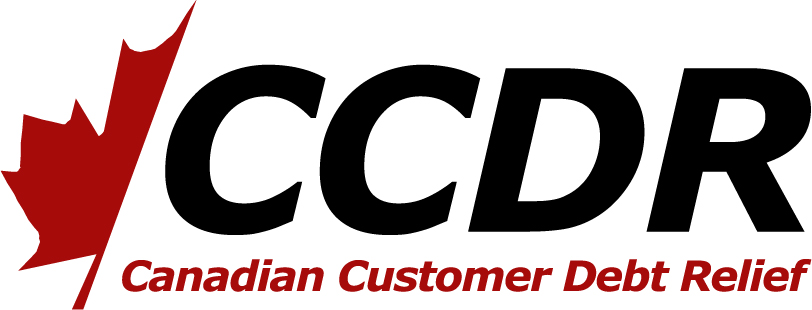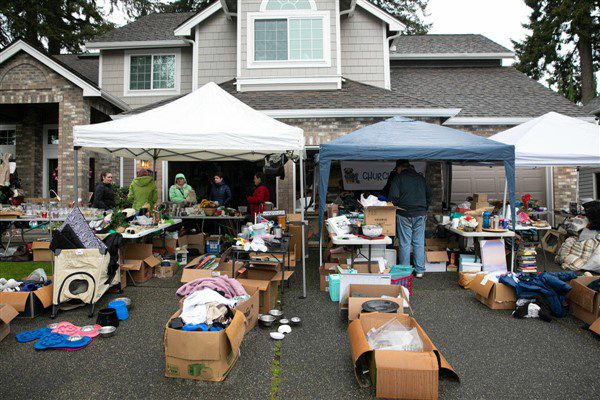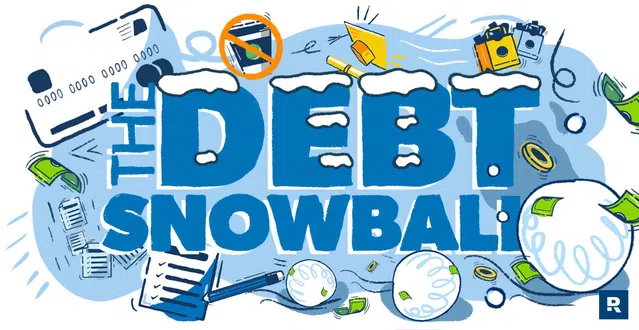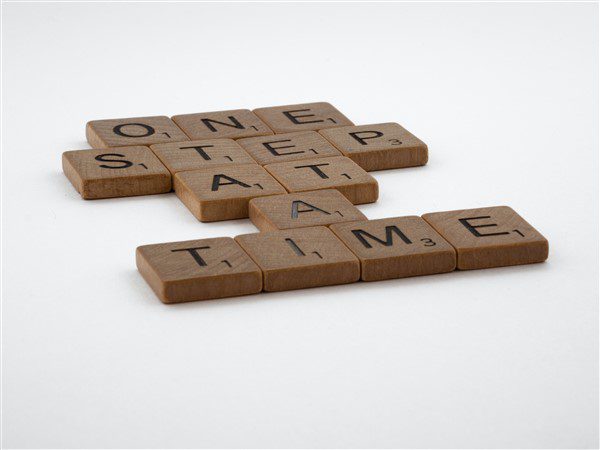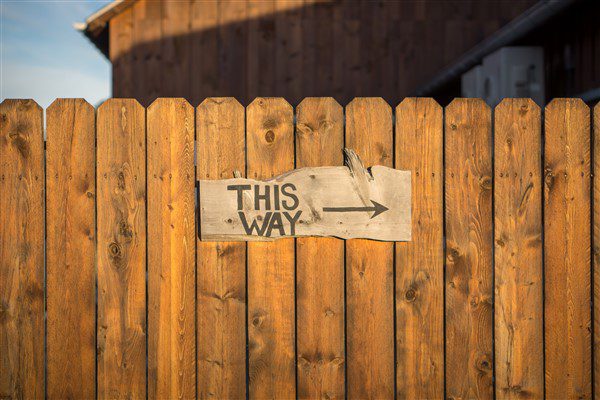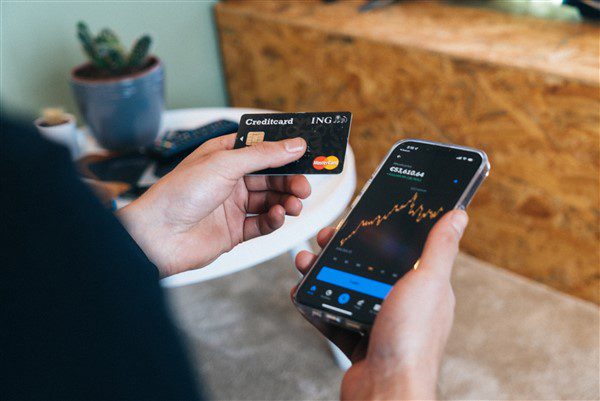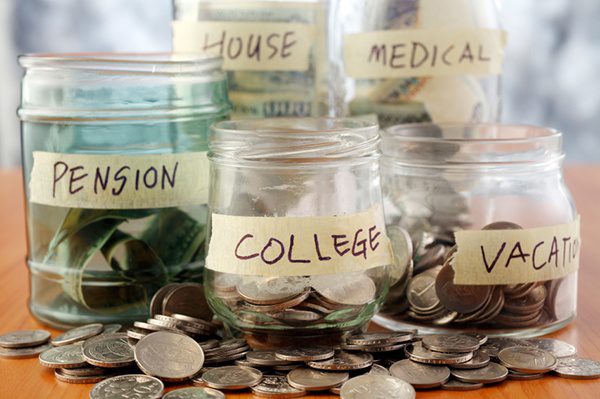Posts Tagged ‘Budgeting’
Finding used items for less instead of buying new
There are many reasons why you might be considering buying new items instead of used ones. Maybe you’re worried about how well the product will hold up over time, or maybe you’re afraid that it’ll break down before your warranty expires. But we’re here to tell you that buying used is often a better choice than buying new. There are some things that should always be bought new (like mattresses) but there’s also plenty of stuff that can last just as long if not longer when purchased secondhand. Here are some examples:
Used appliances.
When you’re in the market for a new appliance, you might be surprised at how expensive they are. You may even be tempted to buy one used, but how do you know if it will work?
Are you willing to risk purchasing an appliance that isn’t up to par or doesn’t function properly? If so, then go ahead and purchase used appliances—but don’t say I didn’t warn you!
Buying used appliances is risky business because most people don’t want their new appliances breaking down after only a few uses. If this happens, then what will happen? The repair costs can be high and time consuming (especially if the part has to be ordered). Plus who wants all that stress when trying something new out for the first time? Not me!
Used building supplies.
When it comes to building supplies, it’s important to note that you’ll often pay by the pound. That means that used building materials are often cheaper than new ones!
Here are some places where you can find used building supplies:
- garage sales
- thrift stores (like Goodwill)
- online
Used clothing.
When you’re looking for used clothing, there are a number of places to check. Thrift stores and consignment shops are two common options. You can also shop online or at garage sales—though it’s a good idea to make sure the seller is trustworthy before agreeing to buy something from them.
While shopping for used clothes may seem like a daunting task at first, it’s actually quite easy once you know how to go about it. By knowing where and how to look for clothes on sale, you’ll be able to find exactly what you need—with no worries about breaking the bank!
Used audio-video equipment.
- If you’re looking for a new audio-video equipment, consider buying used. It’s a great way to save money and often comes with warranties that don’t have any extra costs. When shopping around for used audio-video equipment, try to find the best deal you can find. Try not to buy something that is too expensive because it might not be worth it later on when you decide to sell or trade it in later on down the line.
- Look into getting warranties on items like laptops and tablets as well as televisions before purchasing anything new; these types of warranties usually cost more than normal ones but they give you peace of mind knowing that if anything goes wrong with an item within its lifetime period then there’s someone who will repair or replace it for free (or partially free).
- Make sure whatever type of warranty coverage receives does so by keeping track of all documents from when purchased new from store(s) where purchased such as receipts etcetera so we can process claim requests quickly without delay once submitted within 30 days after purchase date which must include original sales receipt showing proof purchase date bought at store(s) location where purchased along with photo ID card issued by government agency such
Used books and magazines.
Finding used books and magazines can be a great way to save money. You can find used books from thrift stores, yard sales, and online. If you are looking for an inexpensive option for books for your child’s school projects, consider buying secondhand if possible. It might be fun to check out your local library too as they often have shelves full of books that were donated by the community or are being resold before they go into storage.
In addition to saving money when purchasing used items, it can also be beneficial environmentally because fewer materials were used in production and transportation costs will be lower as well. If you don’t want to keep the book after reading it then donating them to someone who might enjoy reading them is another great way of recycling titles that no longer have any usefulness in your household!
Used children’s items.
Buying used kids’ items is a great way to save money. You can find everything from toys to food and furniture.
- Used toys: When shopping for used children’s toys, look for items that have not been recalled by the manufacturer or government agencies. Check the date on each toy, as well as its packaging, labels and instructions. If you’re in doubt about what condition is safe for your child to play with, don’t buy it! Also consider how much fun your child will get out of the item—if he or she has already outgrown it and won’t be able to play with it much longer anyway (such as a first walker), then buying new might be more practical than buying secondhand since they won’t get as much use out of it over time before being replaced by something newer.
- Used baby clothes: Buying used baby clothes can save you tons of money! Be sure to check all seams carefully before purchasing any garments made from delicate fabrics such as silk or wool since these tend not hold up well when washed repeatedly over time due their fragility while synthetic materials like polyester will retain their shape better under repeated washing conditions over time which means that your purchase could last longer than expected so long as no rips occur during washing cycles which would cause them fall apart faster than usual.*Used Baby Gear: Buying secondhand gear for babies may seem risky at first glance but remember that many parents sell their gear after using just one child so if anything goes wrong there’s always someone else who can fix whatever needs fixing without having spend hundreds upon hundreds dollars on something brand new
Used furniture.
Buying used furniture is a great way to save money. You can find used furniture on craigslist, kijiji and other online sites. You can also find it at thrift stores, yard sales and other local places. When buying used furniture, make sure that it is in good condition and that you know what you’re getting into.
Used home décor.
Home décor is often an area where people have a hard time saving money. There are just so many things to buy: bedding, curtains, rugs, artwork and more! That’s why it can be a good idea to shop secondhand when looking for home décor.
If you’re trying to save money on decorating your house or apartment without looking cheap, thrift stores and garage sales are great places to look for used items that can be repurposed into something beautiful. If you’re buying online instead of in person (or even if it’s a garage sale), make sure that the item is in good condition before buying—you don’t want anything falling apart after only one use!
Another great thing about shopping at secondhand stores is that it will help you find pieces that are unique or have a story behind them—something that can make your home feel more like yours instead of mass-produced furniture from Walmart. If there’s anything else about the piece that appeals to you besides its appearance (such as its size), then go ahead and get it! It’ll fit perfectly into whatever style room space exists in your home right now — because who doesn’t love saving money while making their house look better?
Used music and movies, CDs and DVDs.
Used music and movies, CDs and DVDs are available at many different places. Online sites are a great place to find used music and movies, CDs and DVDs. The prices on these items are often cheaper than you’d expect, but they can sometimes be more expensive than new ones.
Used outdoor gear, including camping, fishing and hunting equipment, bicycles and boats.
- The used outdoor gear market is huge, and you can find used items at garage sales, thrift stores, and online.
- A lot of people are selling their old gear so there’s a lot to choose from.
- Used outdoor gear usually costs less than new outdoor gear because it doesn’t have to be manufactured or marketed yet.
Used sporting goods and exercise gear (the newer the better).
- Used sporting goods and exercise gear are a great way to save money.
- Used sporting goods and exercise gear are often in great shape.
- You can find used sporting goods and exercise gear at yard sales, flea markets, or online sites like Craigslist and eBay.
Conclusion
Hopefully, this article has opened your eyes to the many different ways you can save money by buying used items. If you’re interested in trying out some of our tips, we encourage you to do so! You might be surprised at how easy it is to find great deals on things like appliances, building supplies or even furniture at thrift stores or garage sales. And if you need help cleaning them up before use? Well then maybe consider hiring someone else for some extra cash—like yourself!
The Debt Snowball Method
The debt snowball method is a simple way to pay off your debts. Instead of tackling them all at once, you focus on paying off the smallest debt first. Then, when that’s paid off, you move to the next-smallest debt and so on until all your debts are gone. It’s an easy way to revitalize your finances because it gives you a sense of accomplishment right away—you’ll see progress right away rather than staring at a $10,000 balance on your credit card statement feeling hopeless and overwhelmed.
Debt Snowball
The Debt Snowball method is a proven way to eliminate debt. The principle behind this approach is simple: the faster you pay off your debts, the less you will owe overall. By focusing on paying off your smallest debt first and then moving onto the next one, you can quickly start seeing results.
The Debt Snowball method also works because it allows you to build momentum as you progress through your goals. Once you’ve paid off your first (or second) loan, it becomes easier to imagine that other loans will be eliminated in due time as well—and this makes it easier for us humans to maintain our motivation and keep going!
The debt snowball is the most popular and effective way of paying off your debt. It involves paying down debts in order of smallest to largest, focusing on one at a time.
The method works because it saves you from wasting time on the highest interest rate loan, allowing you to pay more towards it every month and get out from under its burden sooner. The logic behind this method is pretty simple: if your goal is to pay off all of your debts in order of smallest balances first, then sit back and enjoy life as a debt-free individual!
Eliminate debt
The first step to getting out of debt is to list all your debts in order of size. If you have a credit card balance, a student loan balance and a car loan, start by making minimum payments on all three accounts except for the smallest one. Once this account is paid off (or almost paid off), put all the money that was going toward that account toward your next smallest debt, until you’ve eliminated all but your final one.
At this point, it’s time to focus on one remaining debt at a time while making bigger payments than just the minimums. Your goal should be to pay each debt down as quickly as possible—and then start over again!
Pay off Debt
Once you have your debt snowball ready, it’s time to start paying off your debt.
There are a few different ways to pay off debt (like the debt avalanche and debt snowball), but we recommend using the debt snowball method. It’s also called the “snowball effect” because it starts with small debts that are easier to pay off and builds momentum by adding larger debts into the mix. With this approach, you’ll eliminate all of your debts sooner than if you just paid off one at a time in any order or didn’t use any strategies at all!
Here are some tips on how to pay off your debts faster:
Debt Plan
- Set up a debt payment plan.
- Set up a budget, including all of your expenses and income.
- Make a plan to increase your income, if possible – for example, by getting a second job or starting a side hustle (or both).
- Make a plan to decrease your expenses, if possible – for example, by canceling subscriptions that aren’t providing enough value in exchange for the cost or shopping around for lower-priced options (like cable television).
- Make a plan to increase savings by setting aside some money every month in an emergency fund or retirement account so you don’t have to take out additional debt later on when there might not be any other options available (for example: when you have no more credit left).
The debt snowball method will help you eliminate your debt faster.
The debt snowball method is a debt elimination method. It’s a debt reduction plan and a debt management strategy, too.
If you use the snowball approach to eliminating the debts on your list, you’ll get to see progress much faster than if you were trying to pay off all of them at once. You’ll be able to check something off your list with each payment made towards one of your debts, which will help keep motivation high and lead to more success in paying off all of your outstanding bills.
Conclusion
If you’re planning to pay off debt, the Debt Snowball method could very well be your best option. The debt snowball method is a tried and true way to get out of debt quickly. We’ve learned throughout this article that there are many different ways in which people approach their finances, but one thing that’s always going to remain constant is that everyone has money problems at some point in time or another. Using Dave Ramsey’s Debt Snowball Method will help you eliminate your debts faster than ever before because this strategy focuses on paying off what seems like smaller amounts at first but eventually becomes larger payments towards your debt balance as time goes on
Are you in trouble with your debt load?
Getting out of debt can feel like an impossible task. But it’s not. With the right information, guidance, and support, you can get out of debt faster than you think. The trick is knowing where to start. You might be surprised to learn that debt isn’t always bad—in fact, it can be helpful when used correctly. You just need to make sure that your debts are manageable and affordable so they don’t keep piling up on top of each other like a house of cards ready to collapse at any moment (which happens more often than you’d think). In this guide we’ll walk through what getting into debt looks like and how you can use these tips to get back on track with your finances!
When you’re in debt, it can feel like you’re never going to get out.
When you’re in debt, it can feel like you’re never going to get out. You might have the same thought I did: “I’ll never be able to pay off all this debt. I will always have debt.” The stress of living like this is intense, and as a result, so is the sense of being trapped—a feeling that’s only exacerbated by financial challenges such as low or unstable income and unemployment.
If your debt is causing stress and negatively affecting your life in other ways (for example, by limiting what you can do), then something has to change. Here are some ways to help:
- Get back on track with budgeting
- Start saving for the future
Your debt-to-income ratio will tell you how much of your income goes toward paying off your debts.
Your debt-to-income ratio is a way to measure your financial health. It’s the percentage of your income that goes toward paying off all of your debts. The debt-to-income ratio is calculated by dividing a list of outstanding debts by total household income. For example, if you have $20,000 in credit card debt—and annual household income is $50,000—your debt-to-income ratio would be 40 percent (20 / 50).
The higher the number on this scale, the more at risk you are for experiencing financial trouble down the road. If your ratio is too high (e.g., above 40 percent), it may mean that you can’t afford to take on any new loans or repay existing ones without getting deeper into trouble with debt collectors and creditors who want their money back immediately!
Understand the way that debt works and how it fits into your life.
The first step toward getting yourself out of debt is to understand how debt works in your life. Debt isn’t a bad thing, and it doesn’t always have to be bad for you. It can actually be a great tool for optimizing your finances and helping you achieve the things that are important to you. For example, if buying a house is something you want in the next few years, taking on some mortgage debt could be an excellent way to get there faster—assuming that the value of what’s being purchased outweighs the cost of borrowing money at interest rates higher than those available through other investments.
However, there are times when taking on too much debt isn’t wise at all; this usually happens when people don’t understand or respect their own limitations with regard to paying off loans over time (e.g., credit card balances). If this sounds like something that describes your own situation right now then please keep reading!
Know what happens if you don’t pay your bills on time.
You may think that if you skip a payment or two, it won’t matter. But if you don’t pay your bills on time, there are consequences. You could lose your credit score and find it hard to get loans in the future. Your creditor can also sue you for payment and send the case to collections if they decide not to pursue legal action themselves. These actions can make it difficult for you to get approved for new credit cards or loans in the future because they’ll lower your credit score even further.
There are many options for paying off debt and saving money, but not all of them work for everyone.
There are many options for paying off debt and saving money, but not all of them work for everyone. You can pay off debt in a variety of ways, including:
- paying off your credit card with another credit card
- using a cash back rewards credit card to save money on everyday purchases like groceries
- taking out a personal loan or line of credit to pay down your debt faster (but this can be risky if you’re carrying too much debt)
If you need help deciding how you want to pay your debts, consider getting advice from an expert at CCDR.
If you’re struggling with debt, try these tips.
If you’re in trouble with your debt load, try these tips:
- Pay off the debt with the lowest balance first and roll that payment toward the next largest the following month.
- Make a budget and stick to it. If you don’t know where your money is going, you might be surprised by how much of it is going toward unnecessary spending—like those daily coffee runs or weekly happy hour outings that seem harmless but really add up over time.
With enough knowledge and support, getting out of debt can be less scary than it seems at first.
If you’re feeling overwhelmed by the idea of getting out of debt, don’t worry. With enough knowledge and support, getting out of debt can be less scary than it seems at first.
- You can do it yourself: If you have a basic understanding of how to manage money and create a budget, then self-management might be an option for your situation.
- You can get help from a professional at CCDR: A professional can help set up an action plan and provide guidance along the way as well as assist with difficult decisions or unexpected challenges along the way. While this type of assistance is often more expensive than self-help options, having someone else involved who understands what needs to happen may feel more reassuring during times when things seem overwhelming (and they will!).
Getting out of debt is a tough process, but it’s also a rewarding one. If you’ve managed to get this far and read this article about the best ways to save money and pay off debt, then you’re already taking steps toward your financial goals. The next step is simple: follow our advice! Keep in mind that there are many different approaches to spending less and saving more—whether it’s cutting down on eating out or finding creative ways around paying bills late. No matter what method works best for you personally, keep working towards those goals until they become habits instead of just resolutions by using our tips above as guidance along the way!
Staying out of Debt in Canada
Staying out of debt in Canada can be difficult. The credit card companies and other lenders have made it all too easy to get into the red. You may think that it is impossible to get ahead while avoiding debt traps, but there are ways to do so.
Get a copy of your credit report and make sure it is accurate.
- Get a copy of your credit report. Click Here
- Check for errors and make sure the information is correct. If it’s not, contact the credit reporting agency to get it fixed.
Keep track of your spending.
- Keep track of your spending.
- Know what you’re spending and where you are spending it.
- Use a spreadsheet or budgeting software to keep track of all your expenses, especially those that are recurring (such as rent).
- Place receipts in a folder for easy reference later on if the need arises, such as an audit or tax season.
Set up a budget and stick to it
The first step to staying out of debt is to set up a budget. A budget is a plan for your money, which will help you keep track of where it’s going and get an idea of how much money you have left over at the end of the month. You can use online tools like Mint.com or Quicken.com to create your own personal budgets, or download them from the Internet for free in Excel format.
Once you’ve created a budget and added all your expenses into it, stick to it! Instead of buying things on impulse, put aside some cash each week so that when payday comes around again (after all bills are paid), there’ll be enough left over for some fun stuff without having to borrow or charge more than planned for until next pay cheque rolls around again.”
Pay down your debts. It will build your credit rating and relieve stress.
The most important thing to do when you’re in debt is to get out of it as quickly as possible. You can do this by paying off the smallest debt first and then working on the next one. If you have multiple debts, try to pay more than the minimum payment each month so that your debts are paid off faster and you have less interest charged on them.
If your credit score is an issue for getting a mortgage or home equity line of credit, it might be worth paying off some of your smaller debts before making any large purchases like a car or house. This will not only improve your credit rating but also save money in interest charges over time. However, don’t use credit cards to pay off other credit cards because this will just lead to more debt!
Consolidate all your debt into one loan with a lower interest rate, if possible.
Consolidate all your debt into one loan with a lower interest rate, if possible.
This is the best way to get out of debt quickly and easily. Consolidating your debts means taking all of your different debts, like credit card bills and car loans, and combining them into one new loan. You’ll have one monthly payment instead of several smaller ones that are spread out over time, making it easier to budget each month. If you can consolidate all the debts into a lower-interest rate loan (usually from three percent to six percent), then this is what you should do first before doing anything else.
To find out whether or not consolidating will save you money on interest payments, go online and run some numbers for yourself using an online calculator like this one: Loan Calculator
If you have bad credit, consider a secured credit card to help rebuild your credit rating.
A secured credit card can help you rebuild your credit rating if you have bad or no credit history. You will apply for a secured card and make a deposit, which becomes your credit limit. The amount you deposit determines your interest rate and whether or not you will be approved for the card. If approved, payments are deposited directly into an account that is held by the bank until it’s paid off in full, so there are no surprises with interest or fees at renewal time.
Pros: A secure card can help establish a track record of paying bills on time and show lenders that they should consider offering regular unsecured loans in future when they see how capable YOU are at managing money responsibly.
Cons: Secured cards have higher than average interest rates compared to unsecured ones due to their riskier nature; however this may be justified if using them allows consumers access to more affordable loans down the road (especially those with low incomes). Get a Secured Credit Card
Applying for new credit cards may lower your rating, so stick with what you have.
Applying for new credit cards can lower your credit rating, so it’s best not to apply for one if you already have a lot of debt. If you do decide to apply, make sure that you are able to pay off whatever balance is on the card before the interest kicks in.
You should also keep in mind that while they can be useful tools, they can also be dangerous if misused. If you have no reason at all (like paying off medical bills or tuition), then it would probably be best not to get one right now. The same thing goes with borrowing money through a payday loan company : if there’s no need for such an expense then don’t take out a loan!
Get help from an accredited debt help agency like Canadian Customer Debt Relief. Their counsellors are trained to help you find the best solution for you, no matter where you live in Canada.
CCDR can help:
- Understand your current financial situation
- Figure out how much money is coming in and going out each month
- Understand which debts are causing problems for you (credit cards? student loans? car payments?)
- Create a plan that lets you pay off all or some of your debts over time
Conclusion
Debt can be a burden that holds you back from the life you want. It can also lead to stress and anxiety. The good news is that there are steps you can take to get out of debt and start saving money for the things you really want.
Don’t just pay the minimum payments on your Canadian Credit Cards
Introduction
When you get a credit card, you will be given the option of paying the minimum payment or a higher amount. You may not realize that if you pay just 2 percent of the balance owed each month, it could cost you hundreds or thousands of dollars more in interest than if you paid more than just the minimum amount. In this article, we’ll explain why paying more than just your minimum payment is better for your wallet and how to do it effectively so that you can save money!
Your minimum payment does not always have to be 2% of your balance.
The minimum payment is the amount you must pay on your credit card if you want to be considered in good standing with the company. It is not always the best way to pay off your debt, and it does not reduce your principle balance.
If you want to pay off your debt faster and save money in interest charges, consider paying more than this amount. For example, if you have a $2000 balance on a credit card with an 18% interest rate and you make only the minimum payment each month ($100), it would take over 2 years to get out of debt! If instead you paid $1000 per month (equivalent to 24% of the balance), then it would only take about 2 months.
You pay more interest if you just pay the minimum each month.
You pay more interest if you just pay the minimum each month.
When it comes to paying off your credit card balance, it’s tempting to just pay the minimum amount due each month, but that’s not a good idea. Why? Because minimum payments are calculated based on your interest rate—the higher your rate is, the higher your minimum payment will be. And since most credit cards have variable rates (meaning they’re tied to an index or a prime rate), those rates tend to go up when inflation rises and fall when deflation takes hold of an economy. Plus, if you don’t make any regular payments against this debt over time—which is like running up new charges on top of old ones—you’ll end up paying even more in interest than originally planned because the longer this debt remains outstanding, the more money it costs you in total cost of ownership expenses like finance charges and other fees charged by financial institutions like banks and credit unions (like transaction fees).
Minimum payments do not reduce your principle balance.
We know that it can be tempting to just pay the minimum payment on your credit card each month, but doing so will not reduce your principle balance. The minimum payment is the minimum amount you have to pay each month as a percentage of your balance. This means it will never go down because most companies calculate their minimum payments as a percentage of interest owed, not principal balance.
Minimum payments extend the term of your debt.
The problem with minimum payments is that they only cover the interest, not the principal. This means you’re only paying interest on your credit card balance and not actually reducing it. In other words, you won’t be freeing yourself from debt any time soon. You’ll just be paying more in total than if you had paid more when monthly payments were due (which is why we recommend always paying at least double your minimum).
Balance transfers are not a good option for long term debt management.
When you consider a balance transfer, think about the following:
- Balance transfers don’t reduce your principle balance. They do, however, lower your interest rate and monthly payments.
- Balance transfers are not a good option for long term debt management. The debt will still be there after the introductory period has passed, and many consumers find that they have just created another problem to solve when their introductory period ends.
- Debt consolidation is one of the most popular reasons people choose to use balance transfers on their credit cards in Canada
You can save hundreds to thousands of dollars by paying more than the minimum on your credit cards
If you’re a credit card user, there’s a chance that you have taken advantage of this interest-free period and are paying only the minimum monthly payment. But if you’re like most Canadians, there’s also a good chance that your credit card balance has remained constant since signing on for the card or getting approved for a line of credit.
If you’re currently doing nothing about your debt, consider these statistics:
- The average 2 person household has $41,500 in debt on their credit cards and lines of credit.
- The average Canadian household carries an average debt load equal to 1/3rd of their annual income (not including mortgages).
- The average Canadian owes $300,000+ on their mortgage alone!
Conclusion
The bottom line is that you should always try to pay more than the minimum amount on your credit cards. You will save money and reduce the length of time that it takes to pay off your debts. If you can’t afford to pay more than 2% of your balance, then don’t do it! Instead consider using another strategy for paying off debts such as contacting a counselor at CCDR and get a free consultation.
Avoiding Payday Loans In Canada
Payday loans are a source of quick cash that many Canadians use to get through the month. They can be convenient when you need money, but they also come with high interest rates and fees which make it hard to pay off your debt if you take one out. If you’re considering getting involved in a payday loan, here are some things you should know before making that decision:
Make Payment Arrangements With Your Creditors
When you’re faced with a problem, the first thing to do is look at your options. If you don’t have cash to pay your bills, consider working out a payment plan with your creditors.
Get on their good side by paying any interest that is due (but not yet late), and any fees, late fees or collection fees that are due but not yet charged. This could help them see you as reliable enough to extend more lenient terms when it comes time for another loan in the future (or who knows—maybe they’ll forget about this one altogether).
If you still can’t afford a loan payment after all of that, it may be time to contact a payday lender as an absolute last resort.
Use Your Tax Return To Pay Down Your Debt
- Use your tax return to pay down your debt
The first thing you should do is use your tax return to pay down your debt. As a general rule, we recommend that you do this on the highest interest rate loan first (i.e., the one with the most expensive interest rate). This way, you’re able to save money in interest charges and payments and are able to get out of debt faster!
- Get a loan from a friend or family member
If using your tax return doesn’t work for some reason, consider getting a loan from friends or family members at an interest rate that isn’t as high as payday loans but still gives them some income for helping you out. We recommend checking with them first before going anywhere else because they may be willing to lend money without charging any fees at all! You can also try asking around through social media if anyone has any extra cash lying around instead of taking out an expensive loan just yet.
- Use A Credit Card To Pay Down Your Debt
If you can’t get a loan from friends or family members, try using your credit card to pay down your debt. This may be the only option left for some people who don’t want to take out an expensive loan just yet because they don’t have any other way of paying it back before their next payday comes around.
There are a lot of things you can do to keep from getting involved in a payday loan.
If you’re thinking about getting a payday loan, then there are some things you should know about them. First of all, if your friend asks for money and tells you that they will pay it back next week with their paycheck, don’t lend them any cash. This is what most people do by mistake when using payday loans because they think they’ll be able to pay it back after receiving their next paycheck. The problem is that these loans usually have very high interest rates attached to them which means that the amount due will keep growing every month until it becomes unbearable and/or impossible to pay off without taking out another loan or selling something valuable (like your car).
Instead of borrowing money from friends or family members who may not be able to afford giving out cash right now (and who would rather see other people succeed), ask for help from a professional financial advisor at www.ccdr.ca who specializes in helping people with debt problems like yours!
Budgeting During Inflation in Canada
Introduction
There are many reasons why inflation occurs. Food and fuel prices are often considered the biggest culprits, but the average consumer’s spending habits can play a big role as well. Inflation is inevitable and there’s no way to stop it, but that doesn’t mean you have to spend more money than you need to just because prices go up over time. It’s important to be prepared for inflation as best you can so that it doesn’t hurt your budget too much or even worse, put you into debt!
Being prepared
- Being prepared: The most important thing you can do is to draw up a budget and plan for the future. As inflation creeps in, you want to make sure that your income keeps pace with it and doesn’t lag behind. This means planning ahead so that you can save more money when things are good, but also being flexible enough so that when things go awry (as they inevitably will), there’s still some cash flow left over each month.
- Saving enough money: If your income is steady, then saving is easy—just set aside what’s left at the end of each month for savings or investments and keep doing it until it becomes habit! However, if your income varies from month-to-month or week-to-week (sometimes even day-to-day), then saving may be more difficult because sometimes there won’t be any money left over after covering expenses like rent/mortgage payments or groceries; this is where having an emergency fund comes in handy!
Look at your mortgage
If you have a fixed-rate mortgage, consider refinancing if rates drop. The longer the term of your mortgage, the better it is to refinance at lower rates. If you’re already in a variable rate, look into getting a fixed or capped rate that matches your current mortgage if rates drop.
Get ahead of things
Inflation is a tricky beast. It can sneak up on you without you even realizing it, and before you know it your budget is in shambles. It’s important to stay on top of inflation so that your financial situation doesn’t fall apart!
- Look at your budget: If you’ve done a good job of tracking where your money goes each month, then this may be a breeze for you. If not, we recommend using an app like Mint or Quicken to track expenses for at least two months to get a better idea of how much money comes in versus how much goes out. Once that’s complete, create categories where appropriate and try to come up with some creative solutions if there are any red flags (for example: “Eating Out” might be too high).
- Look at other areas of spending: Are there any areas where we could cut back? Where are our priorities? Is there anything else we could eliminate completely? This step will likely take some time—and possibly some tears—but setting aside personal luxuries means that when inflation hits hard again next year (or sooner), we’ll still have enough saved up for those rainy days.*
Save on food
If you are looking to save on food, there are some easy ways that you can do this. The first option is to buy in bulk. This will allow you to get a lot of the same product at once and then store it for later use. It may also be more cost effective than buying smaller quantities throughout the month or week.
Another good way to save money is by looking for sales and coupons from various stores that sell similar products, particularly grocery stores and supermarkets. You can also look for cheaper alternatives like lower quality items or cheaper brands than what you normally buy as well as cheaper stores and meal options like eating out less often or cooking your meals at home instead of ordering out on nights when possible (which will save even more money).
Buy cheaper brands
There are many ways of lowering your grocery bill without sacrificing quality. Some options are as simple as buying generic brands, while others might require some planning and preparation. Here’s a list of tips to keep in mind when shopping for groceries:
- Buy store brands instead of name-brand products
- Buy in bulk when possible (e.g., at Costco)
- Buy in season or on sale
- Buy on Amazon (if you have a Prime membership)
Use coupons
Coupons are one of the easiest ways to save money on your groceries, and they’re also a great way to save money on other items you purchase. You can find coupons in newspapers, magazines, online and in stores. Coupons typically allow you to buy an item at a lower cost than normal price; however some coupons may even include free products!
The following are some examples of how you can use coupons:
- Use them as currency for trading within your community (e.g., swapping clothes with friends).
- Give them away as gifts for birthdays or holidays.* Don’t throw away expired ones! They still have value!
Cut back on eating out
Eating out is a luxury, so you should cut back on it when times are tough. The best way to do this is to eat at home more often and only eat out less often. If you do decide to go out, try eating at cheaper restaurants or even fast food chains like McDonald’s or Burger King. You’ll save yourself some money and get some good value for your buck.
Buy generic brands
- Generic brands are usually cheaper
- Generic brands are usually the same quality as brand names
- Generic brands are usually available at the same stores as brand names
Take stock of your bills
To start, list all of the monthly bills you pay. These include things like rent or mortgage payments, car insurance and gas costs, grocery bills and utility bills (water/electricity). Next, figure out how much money you spend on each bill per month, per year and even per week/day/hour if possible.
Now that you have a clear picture of how much money is going out every month, we can begin to identify potential areas where we can cut back on spending.
Reconsider utilities
One of the first things you should do as a budgeter is to look at your utility bills. Look for anything that can be done to lower your cost, whether it’s changing providers, using less electricity or water, or switching from heating oil to natural gas. If you find yourself driving long distances every day for work and need to cut back on gas usage, consider taking public transportation instead of driving yourself (or maybe even getting rid of one car altogether).
Inflation is inevitable, but that doesn’t mean you can’t plan ahead.
Inflation is a natural process that occurs when the supply of money grows faster than the demand for it. When this happens, prices rise and the purchasing power of your money decreases.
Inflation does not happen overnight; it takes time for inflation to increase from 0% to 2%. And it’s important to remember that inflation is not just something that affects you and me as consumers in our day-to-day lives, but also affects businesses who need to adjust their prices accordingly in order to stay competitive in the market place.
However—just because we know what causes inflation doesn’t mean we have control over how much it will occur or when! Inflation can be very unpredictable so we all have a role here: stay informed about current economic news so you can plan ahead accordingly!
Conclusion
With inflation being a fact of life, it’s important that you take steps to plan for it. By being prepared and looking at ways in which you can cut back on spending when prices go up, you can avoid getting caught off guard when your grocery bill suddenly goes up or electricity rates increase without warning.
Money Saving Tips for New Parents
Introduction
As a parent, you want to provide your child with the best of everything. But that can be hard on the budget! I get it: You’re tired and busy, and you don’t really have time to do much other than take care of your little ones. But if you want to save money when you have kids, these tips will help.
Be Honest About Your Finances
You and your partner need to sit down and have a conversation about your finances. Be honest with each other about what you can afford, what you spend, your financial goals and priorities, as well as your current financial situation.
If one of the two of you has more debt than the other or makes more money than the other, that doesn’t mean that person should be responsible for everything—you both have a say in how much debt is taken on or how much money is spent on baby-related expenses.
Make a Baby Budget
You’ll need to determine how much money you can afford to spend on your new baby. First and foremost, write down all of the expenses that you have already incurred for the birth of your child. These might include hospital costs, doctor’s fees, items purchased at Babies R Us (or Target or Walmart), and any other related items that you have already spent money on.
Next, make a list of expected expenses for the coming weeks or months as well as some possible unexpected expenses that may come up during this time period. The latter could include additional tests or treatment from doctors not covered by insurance such as physical therapy sessions if there are developmental delays; prescriptions for medications; additional appointments with specialists like neurologists or speech therapists; toys that aren’t included in your “starter kit”; gifts from relatives & friends who want to shower them with things…
After making these two lists, calculate how much money you still need left over in order to save up enough funds so that whatever happens will not cause financial stress later on down when bills start rolling in faster than ever before! This is where being organized helps immensely because now at least we know what needs doing first: planning out our future finances so they’re no longer just abstract concepts but rather tangible goals which can be accomplished through careful budgeting decisions made every day.”
Create a Savings Plan
To create a savings plan you will need to:
- Set a savings goal. This is the amount that you want to save in total, over time. It could be as small as $500 or as high as $5 million.
- Set up a savings plan for how you are going to achieve your goal. Set aside enough money each month so that by the end of it all, your savings account will be full and ready for whatever comes next (whether it’s college tuition payments or retirement).
- Decide on how long it will take before reaching your goal—anywhere from one year to 40 years!
Take Advantage of Freebies
As you are probably aware, there are a number of freebies available to new parents. If you don’t know where to look, here are some tips:
- Take advantage of freebies in your area. There are likely several organizations in your community that offer vouchers or discounts for new parents. For example, the March of Dimes has partnered with companies like Babies R Us and Toys R Us to provide exclusive discounts on select products.
- Take advantage of freebies for families with kids aged zero through six years old. These deals come from corporations such as Waffle House and McDonald’s who want nothing more than for your children—and you—to have a happy meal experience!
- Look out for other deals on items like clothing or diapers too! Your baby doesn’t need designer clothes but if someone gives them away at no cost then why not take advantage?
Save money when you have kids!
- Buy clothes second-hand. It’s a great way to save money, and you can find some really cute stuff!
- Buy at the right time of year. Winter clothes are usually cheaper during autumn, while summer clothing is cheaper in spring.
- Buy in bulk if it’s something you use frequently (like baby food), but only if you need a lot of it. Buying big tubs of baby food will save you money, but they also take up space that could be used for more important things like more diapers or bottles (or maybe just more room for yourself).
Conclusion
So, now you know some of the best money saving tips for new parents. The key is to get started right away and make a plan that works for your family. If you have any questions about how to save money with kids, feel free to contact us!
